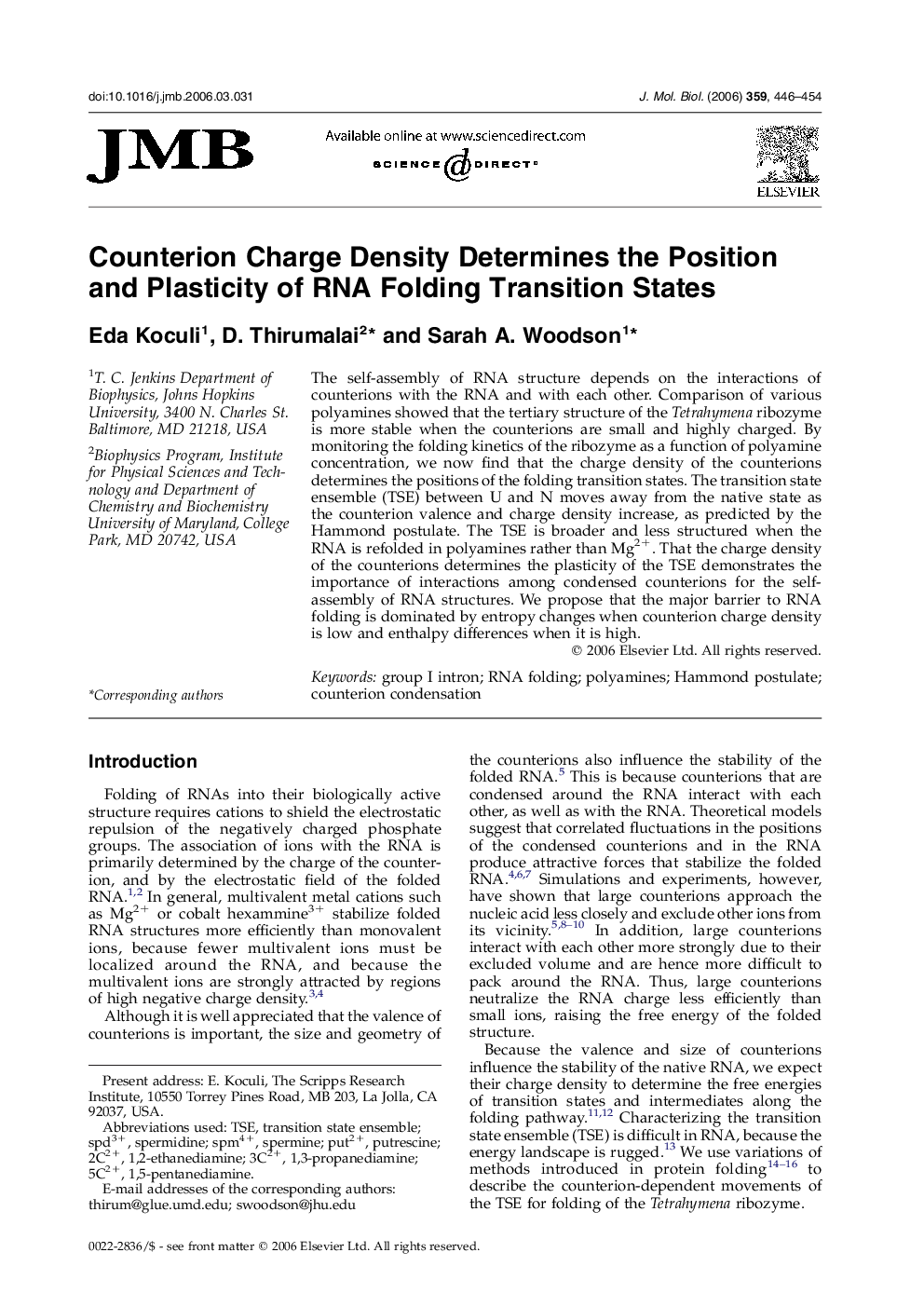| Article ID | Journal | Published Year | Pages | File Type |
|---|---|---|---|---|
| 2189721 | Journal of Molecular Biology | 2006 | 9 Pages |
The self-assembly of RNA structure depends on the interactions of counterions with the RNA and with each other. Comparison of various polyamines showed that the tertiary structure of the Tetrahymena ribozyme is more stable when the counterions are small and highly charged. By monitoring the folding kinetics of the ribozyme as a function of polyamine concentration, we now find that the charge density of the counterions determines the positions of the folding transition states. The transition state ensemble (TSE) between U and N moves away from the native state as the counterion valence and charge density increase, as predicted by the Hammond postulate. The TSE is broader and less structured when the RNA is refolded in polyamines rather than Mg2+. That the charge density of the counterions determines the plasticity of the TSE demonstrates the importance of interactions among condensed counterions for the self-assembly of RNA structures. We propose that the major barrier to RNA folding is dominated by entropy changes when counterion charge density is low and enthalpy differences when it is high.
